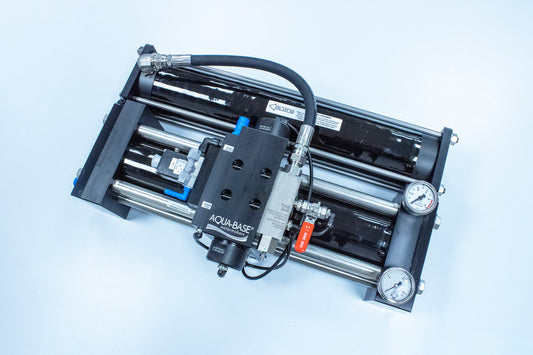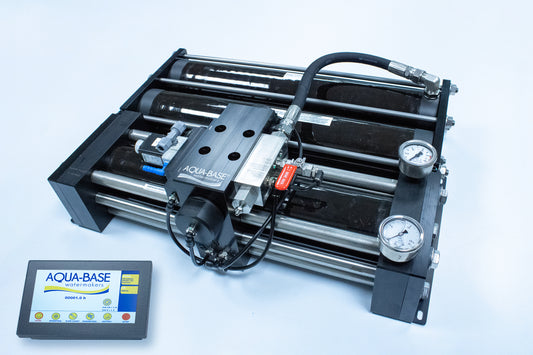Which watermaker to choose?

COMPLETE GUIDE TO CHOOSING THE RIGHT WATERMAKER
A watermaker is an essential piece of equipment for sailors and boaters who want to gain autonomy by producing their own freshwater. With so many models available, making the right choice can be tricky. This guide will help you identify the key criteria to select the watermaker best suited to your needs.
1. Define your water needs
Before choosing a model, it’s important to assess your daily water consumption. This estimate depends on several factors:
- Number of people on board: the larger the crew, the higher the water consumption.
- Intended uses: will the water be used only for drinking and cooking, or also for showers, cleaning the boat, or even professional activities? Certain activities such as dive charters (where divers regularly rinse their gear) or commercial fishing can significantly increase water use.
- Duration of trips: long-distance sailing requires a higher production capacity than coastal cruising with frequent stops.
- around 60 liters/day for 3 to 5 people,
- 60 to 100 liters/day for 4 to 6 people,
- and a minimum of 100 liters/day if the crew exceeds 6 people.
2. Choose between manual and electric watermakers
Watermakers come in different types, but not all are suited to regular use on board:
Manual Watermaker
- Operates without electricity, powered only by user effort.
- Production is very limited—only a few liters per hour—making it suitable for survival or ocean racing scenarios.
Electric Watermaker
- Runs on a power source (batteries, solar panels, or generator).
- Offers significantly higher production, generally from 30 to 300 liters per hour, depending on the model (from FIJI to ARUBA ranges).
- Requires installation but is the most practical solution for regular and comfortable use on board.
3. Choose based on your available energy source
The available energy on board determines what type of watermaker you can install:- For production between 30 and 100 liters/hour, an electric watermaker can run efficiently on batteries and well-sized solar panels, providing good energy autonomy. These models typically support 12V or 24V power, suitable for sailboats and small vessels.
- Above 100 liters/hour, energy consumption increases and usually requires a generator, as these units operate on 230V.
- A 30 l/h model consumes about 12 A at 12V (roughly 144 W), like the FIJI models.
- A 180 l/h model (ARUBA) can exceed 1000 W.
4. Consider maintenance and durability
A well-maintained watermaker can last 10 to 15 years, or more. To optimize its lifespan, keep these points in mind:- Automatic rinse system: reduces salt buildup, extends membrane life, and simplifies maintenance.
- Ease of maintenance: choose a model with easy access to components (filters, pumps, valves, etc.).
- Spare parts availability: some devices use standard components, while others require specific, hard-to-source parts.
At AQUA-BASE, we design our machines from the ground up with this logic in mind: we always consider ease of installation, use, maintenance, and component durability to ensure long-term reliability and simplicity.
5. Consider available space on board
Some models are compact and fit easily under a bench or in a locker, while others require more space. Before purchasing, carefully measure the available area and check for general accessibility.
6. Liters/hour vs. liters/day: know the difference
Watermakers are usually rated in liters per hour (l/h), while your onboard needs are typically calculated in liters per day (l/day). The difference is simple: you won’t run a watermaker continuously.
- Smaller models are typically run for just a few hours per day to meet daily needs.
- Higher-capacity units may run for several hours or even all day, especially on boats with greater demands.
Which watermaker should you choose?
The right watermaker depends above all on:
- your water consumption,
- the energy source available onboard,
- and how much energy you can produce or store.
Low-consumption models are ideal for couples doing coastal cruising, while high-capacity watermakers are better suited to larger crews or long-distance voyages.
At AQUA-BASE, we designed the FIJI range to meet both needs—combining flexibility, performance, and energy efficiency.
By considering these criteria, you’ll be able to select a watermaker perfectly adapted to your boat, allowing you to sail in full autonomy and peace of mind.
Need help choosing the right model? Contact a professional or marine equipment specialist for personalized recommendations based on your vessel and cruising plans.






